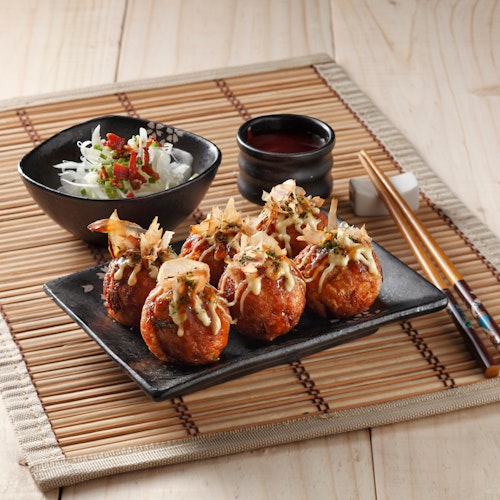Gion Festival in Kyoto: Everything You Need to Know

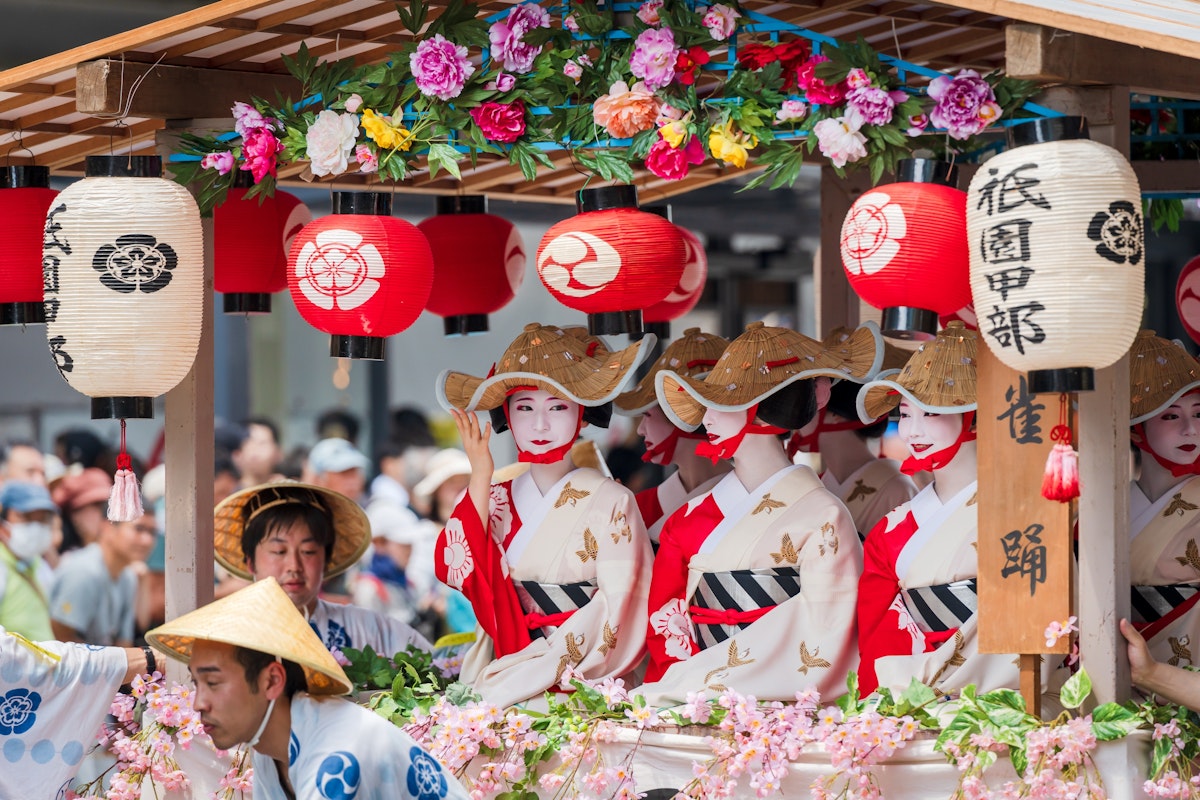
The Gion Festival, or "Gion Matsuri," is a pinnacle of Kyoto's annual celebrations. Taking place in July, this month-long festivity has been woven into the fabric of Kyoto's culture for centuries.
It highlights Japan's rich history and traditions and immerses visitors in a dynamic and spirited atmosphere. This iconic festival vividly displays Kyoto's enduring charm and cultural depth.
Gion Festival in Kyoto
The Gion Festival is a historic Japanese festival dating back to 869. It was initially intended as a purification ritual to combat plague.
Celebrated throughout July in Kyoto, it's famous for its grand processions called Yamahoko Junko on July 17 and 24, which are the festival's highlights. These processions feature two floats - the more extensive 'hoko' and the smaller 'yama', elaborately decorated with textiles and historical treasures, representing portable museums.
The more giant hoko floats, towering up to 25 meters in height and weighing approximately 12 tons, present a majestic spectacle as they are meticulously maneuvered through the streets of Kyoto. The Yoiyama, held three nights before each procession, transforms the city's streets into vibrant party zones with food stalls, music, and people in traditional yukatas.
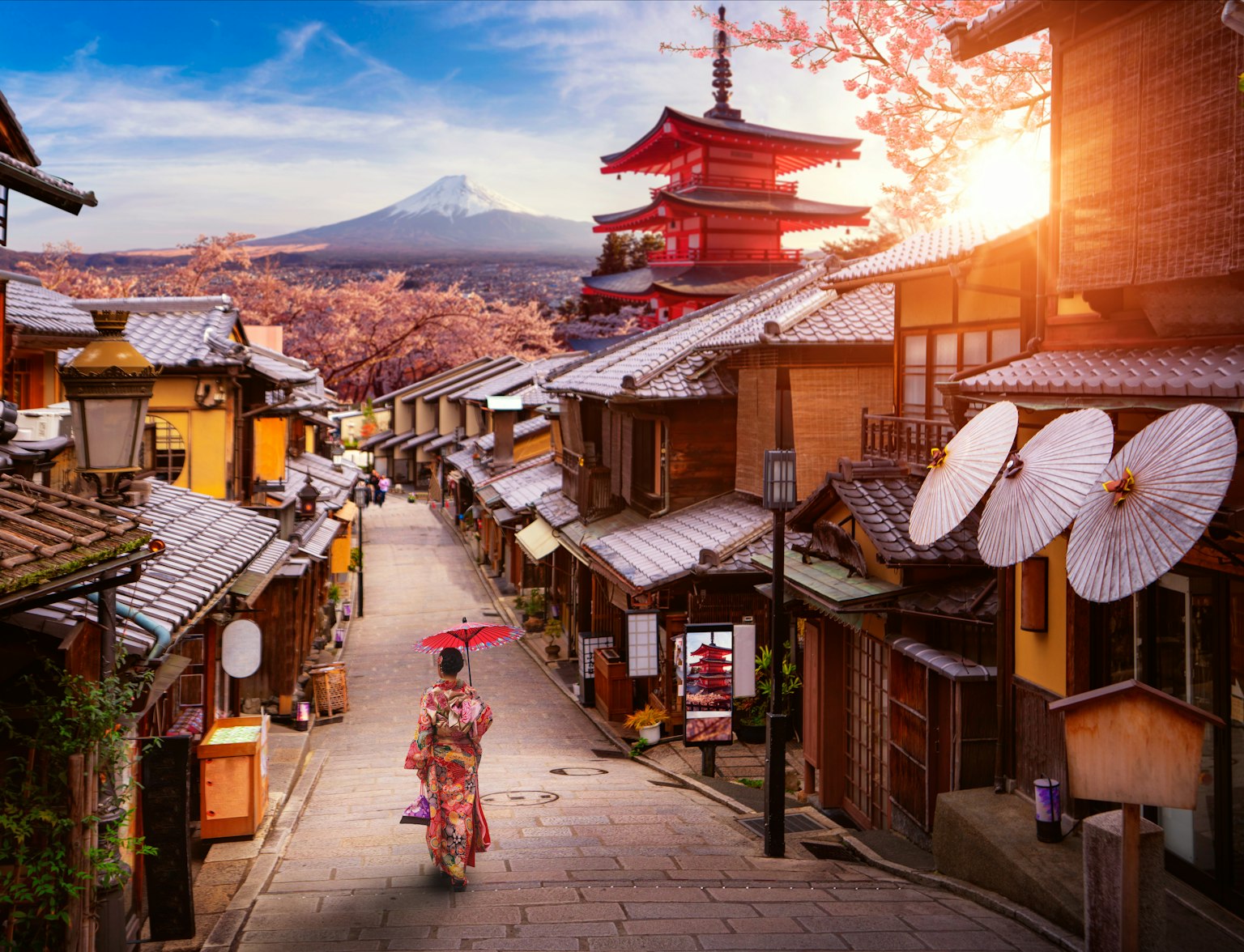
Learn more about this festival from a private local guide.
This period also includes Byobu Matsuri, where local families showcase their private treasures and artworks. The Gion Festival's history is rich with efforts to enhance the beauty of the floats, a tradition dating back to the Edo period, featuring ornaments imported from around the world.
This festival, deeply rooted in religious and cultural practices, is a testament to Kyoto's enduring spirit and community pride. The Gion Festival is divided into two main parts: Saki Matsuri Junko (July 10-17) and Ato Matsuri Junko (July 18-24).
Origin of Gion Festival
The Gion Festival, or Gion Matsuri, began in Kyoto and originated in 869 as a ritual to combat a plague, with prayers directed to the god Susanoo-no-Mikoto at Yasaka Shrine or Gion Shrine. This religious event began with the setting up of sixty-six halberds to symbolize the provinces of Japan, marking it as a purification ritual.
By 970, the event had evolved into an annual festival, cementing its place in Kyoto's cultural calendar. The festival faced interruptions, especially during wartime in the 15th century.
Still, it persisted and grew in splendor, especially during the Edo period when lavish decorations from various countries were added to the floats. Over time, the Gion Festival expanded its religious focus to include more Shintō gods from Yasaka Shrine, evolving into a grand cultural celebration.
Despite historical challenges, including natural disasters and wars, the festival has continued for over a millennium, symbolizing the resilience and spirit of Kyoto's people.
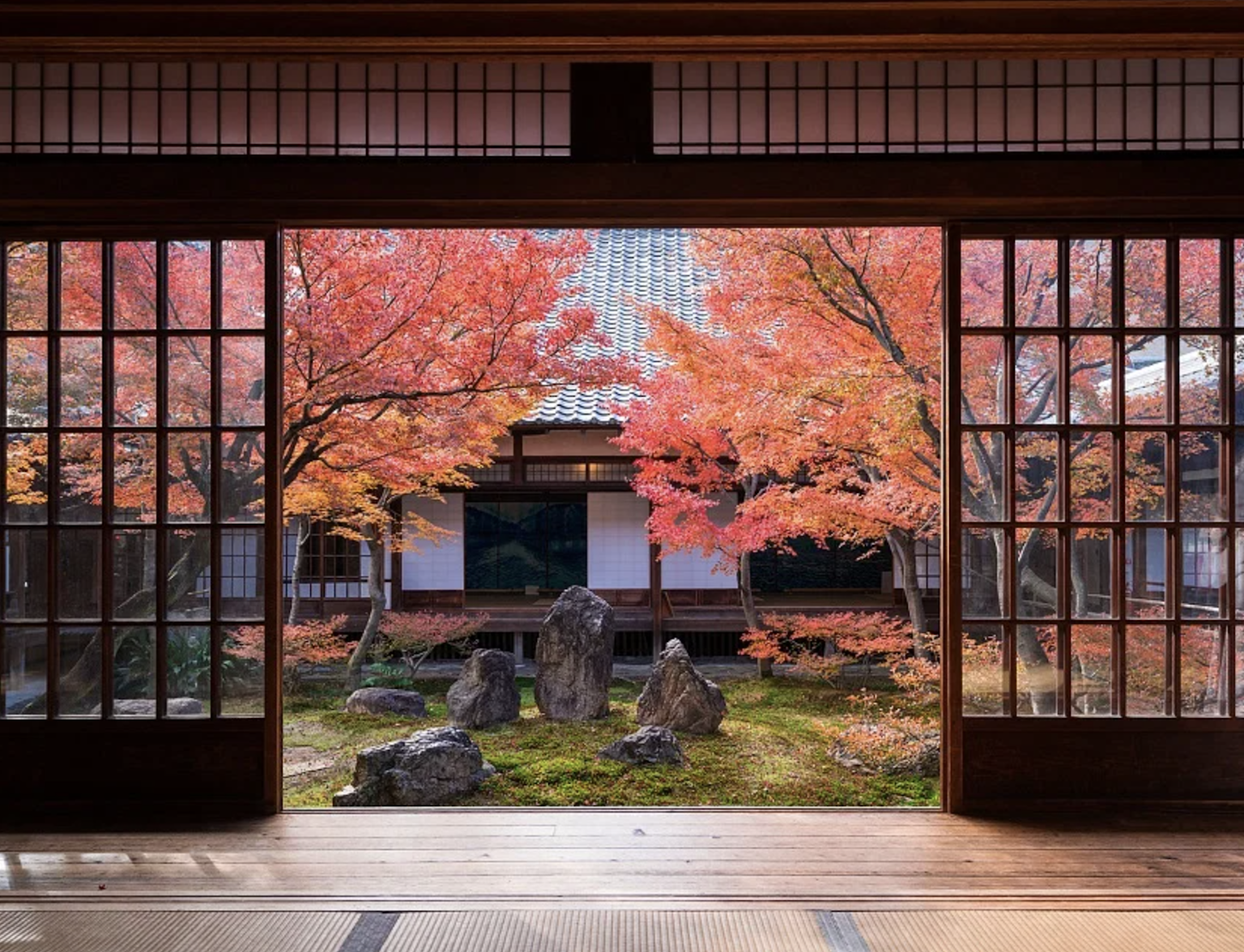
Step into Kyoto's enchanting geisha world, where ancient traditions and modern allure collide.
Festival Highlights
The Gion Festival celebrated in Kyoto, is renowned for its vibrant and culturally rich events that span the entire month of July. Key highlights of the festival include:
1. Yoiyama
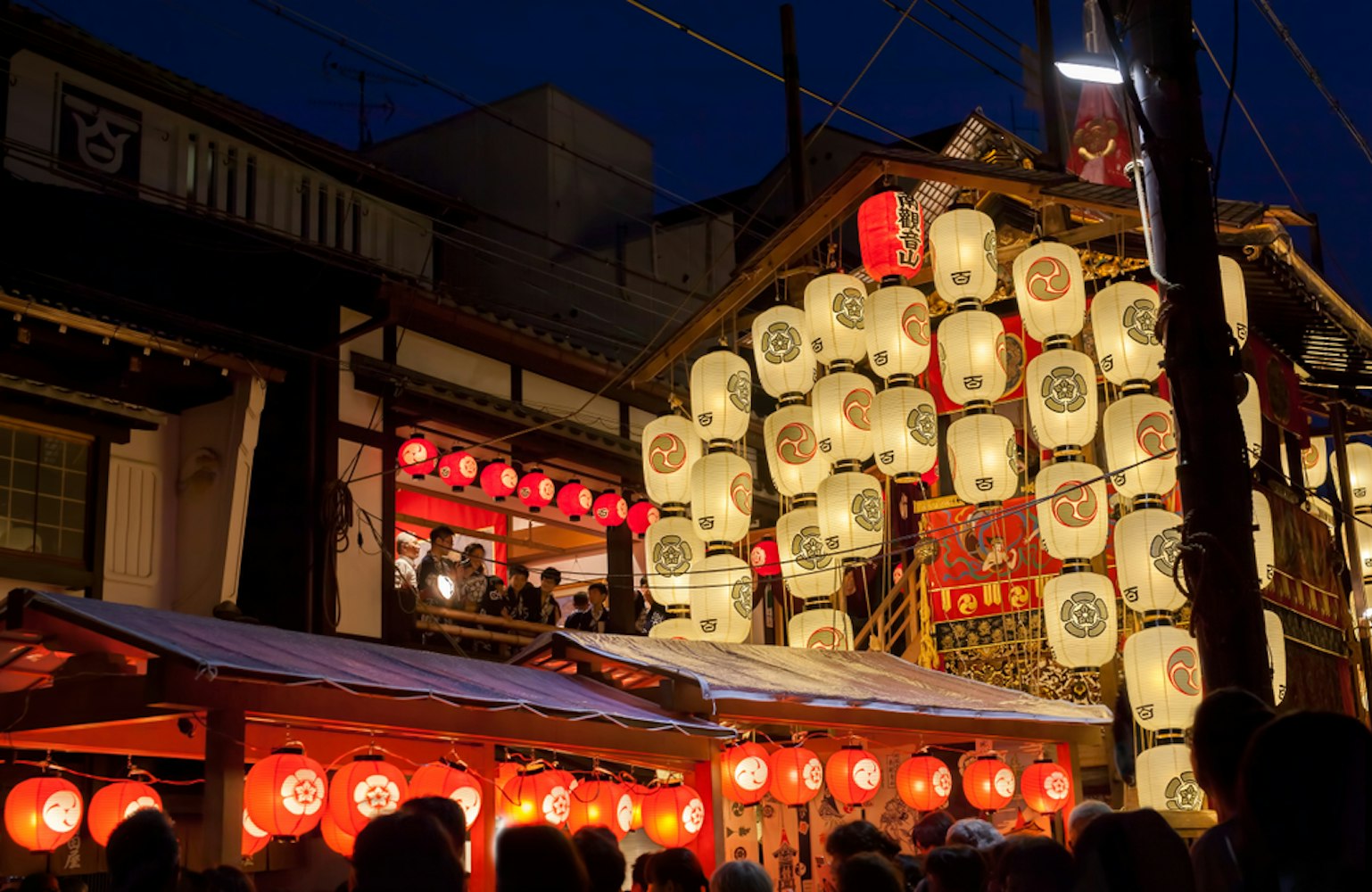
On the nights before the grand parade, Yoiyama is a lively celebration transforming the streets of Kyoto's Gion district. The area is adorned with traditional lanterns and colorful decorations, and the air is filled with the scents of various local delicacies from numerous food stalls.
People, both locals and visitors, don traditional yukatas, adding to the festival's authentic atmosphere.
2. Yamaboko Junko (Float Procession)
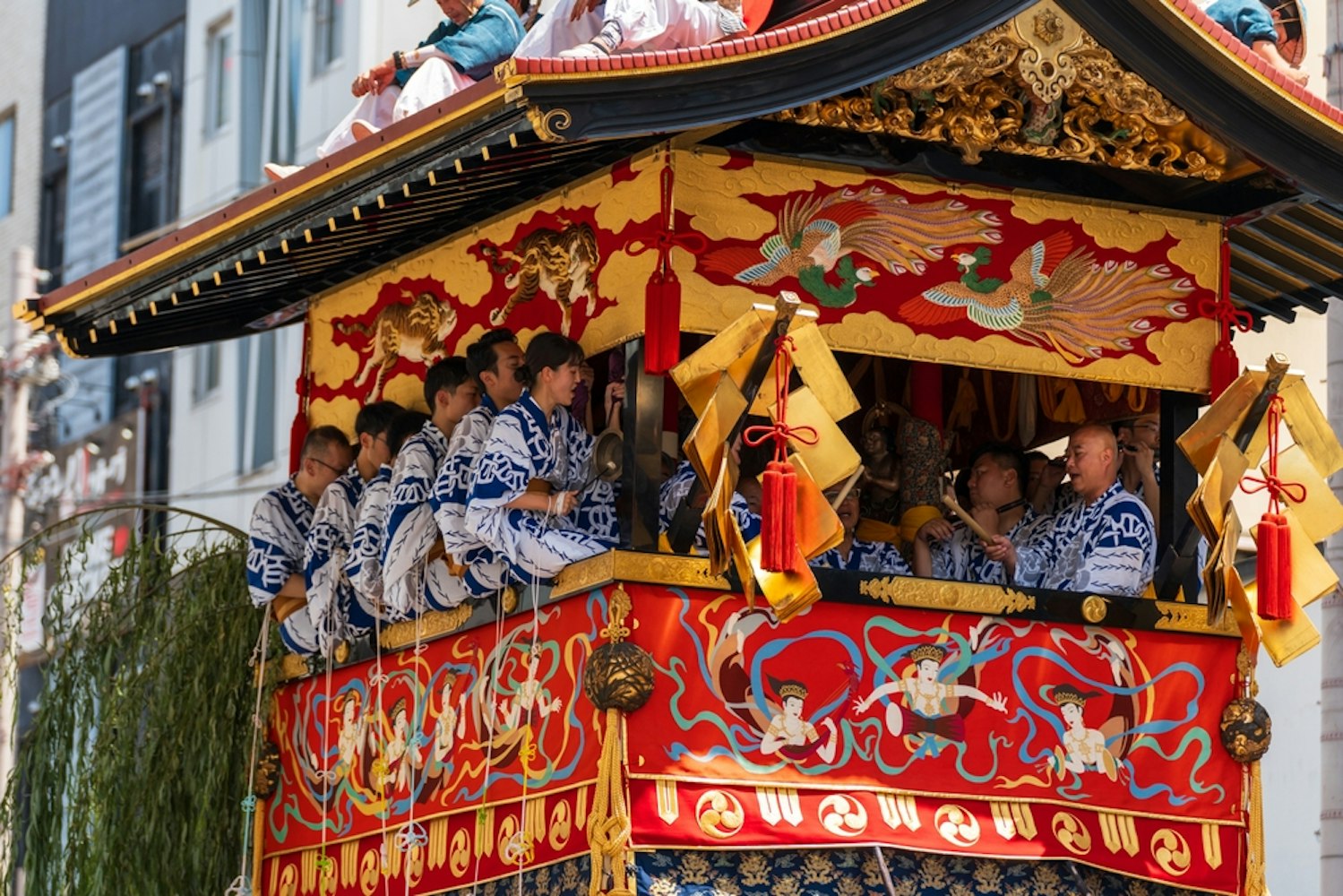
It is the centerpiece of the Gion Festival. The Yamaboko Junko is a grand parade featuring two types of intricately decorated floats: the towering 'hoko' and the smaller 'yama'.
These floats, some dating back several centuries, are paraded through the streets, accompanied by traditional music and performances. The colossal hoko floats can reach heights of up to 25 meters and weigh approximately 12 tons.
The precision and skill required to maneuver these massive structures through the narrow streets are a spectacle.
3. Mikoshi Togyo (Portable Shrine Parade)
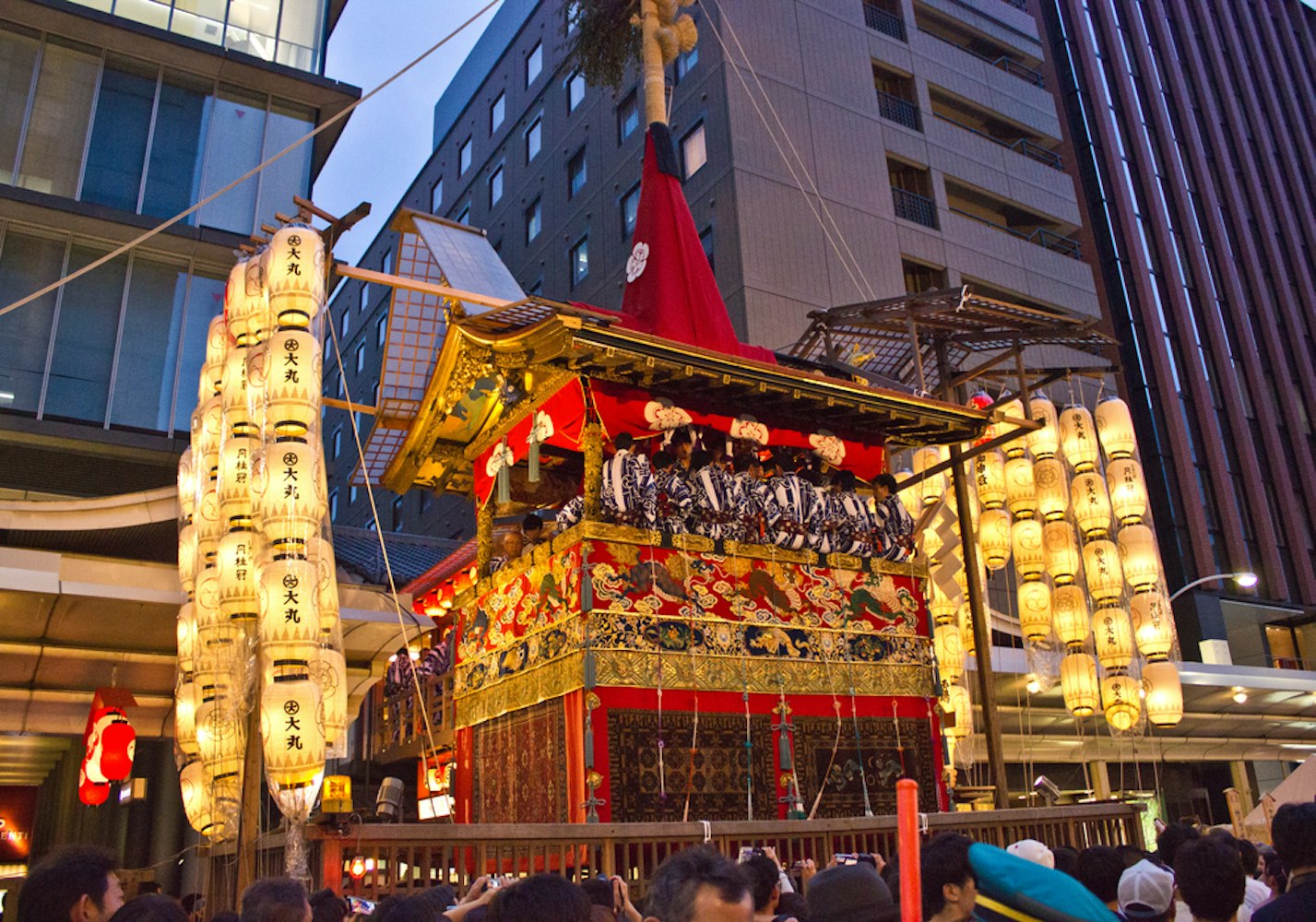
Another significant occasion is the Mikoshi Togyo, a lively and spirited parade where portable shrines, known as "mikoshi," are carried through the streets. The carriers chant, and the crowd cheers them on, contributing to the festival's lively ambiance.
The mikoshi is believed to house deities and are paraded around to bring blessings to the community.
4. Construction and Display of Floats

During the festival, visitors can witness the skilled construction of the floats made from bamboo, wood, and traditional Japanese paper. These floats are then displayed, allowing spectators to admire their intricate details and vibrant colors.
5. Cultural Performances and Traditional Costume
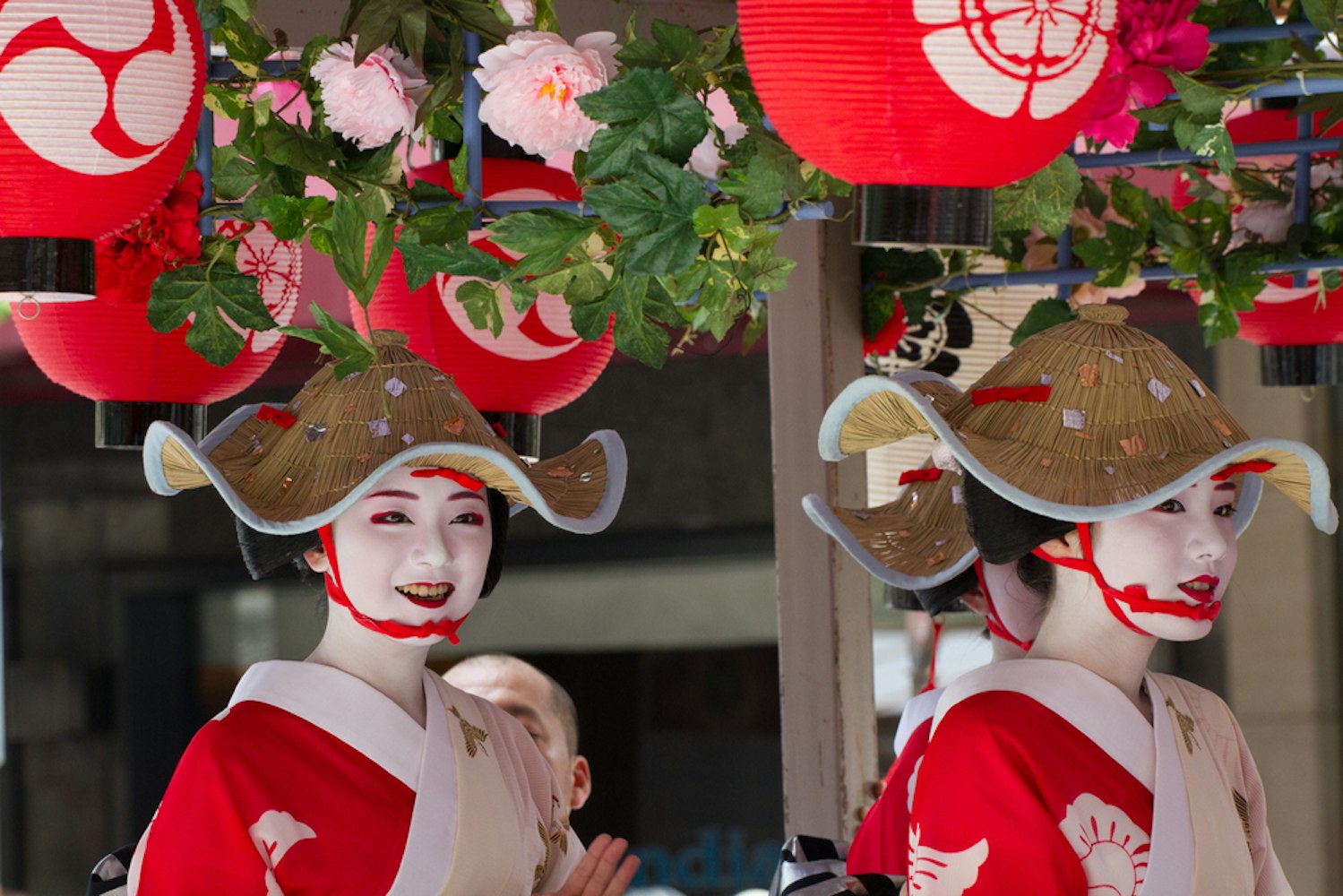
The festival also features geisha and yamabushi (mountain priests) performing in vibrant costumes. These performances, including dance and music, add an element of cultural heritage to the festival.
The Gion Festival showcases Kyoto's rich history and traditions and offers visitors a dynamic and immersive experience. The combination of historical parades, cultural performances, and a festive atmosphere makes it a must-see event.
Activities in the Gion Festival
The Gion Festival is not just about the float processions. The "Byobu Matsuri" or Folding Screen Festival, where residents display their family heirlooms, and the "Yoiyama" evenings preceding the parade days are filled with street food, festive music, and a general celebratory mood.
The entire month of July in Kyoto City becomes a stage for various traditional activities, including performances and local gatherings.
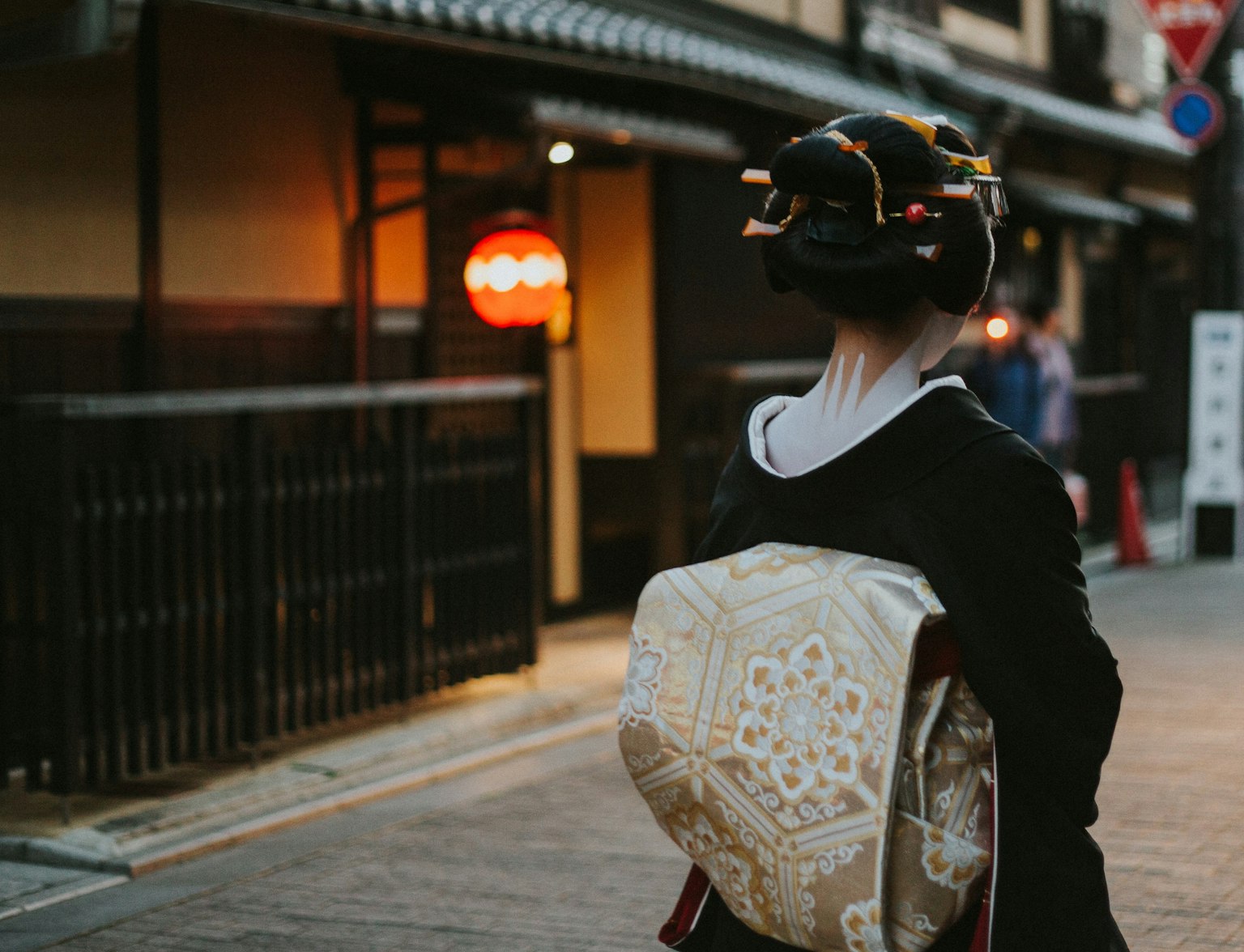
Explore the charming Gion district and with some luck, spot a geisha.
Getting There and Around
During the Gion Festival in Kyoto, the main events and festivities, including the grand procession of floats (Yamaboko Junko), are concentrated around the Gion district, particularly on Shijo, Kawaramachi, and Oike streets. The streets are often closed to traffic in the evenings, making walking a preferred mode of transportation for experiencing the festival's vibrant atmosphere.
Public buses, such as Kyoto City Bus #206 and #100, offer convenient stops throughout Gion, and taxis are also available, though more expensive. Visitors can rent bicycles for a more personalized exploration, allowing easy navigation through the bustling festival areas.
Gion Festival: Kyoto's Heartbeat of Tradition and Unity
The Gion Festival is more than just an event; it's a living, breathing part of Kyoto's soul. It's a time when "the people of Kyoto" and visitors from around the world come together to celebrate a tradition that has stood the test of time.
Whether it's the awe-inspiring float processions, the vibrant street life, or the spiritual ceremonies at Yasaka Jinja Shrine, the Gion Festival offers an unforgettable experience. This festival, a symbol of Kyoto's enduring heritage, is a testament to the city's cultural richness and community spirit.
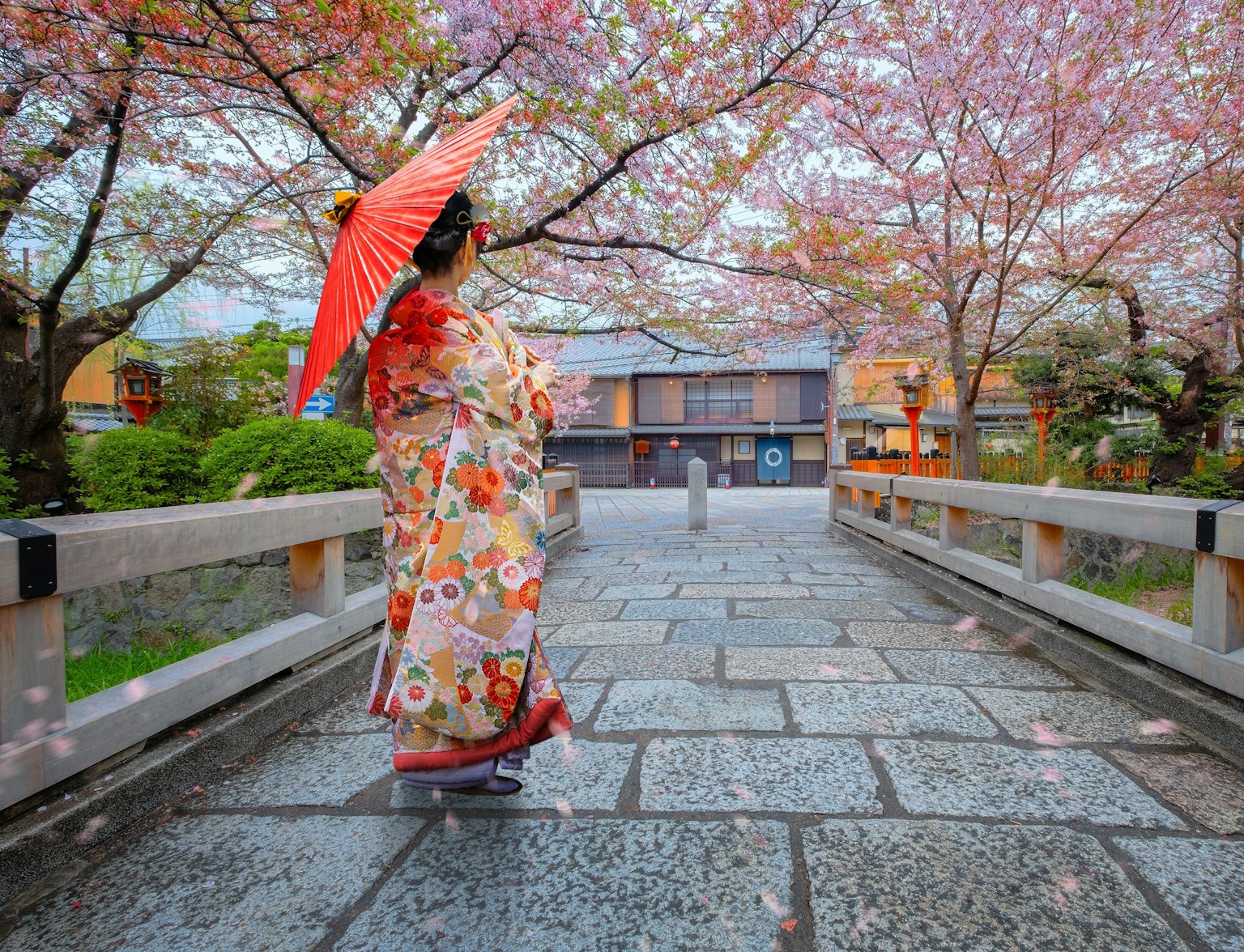
Experience the enchanting world of Gion, Kyoto's historic geisha district.
FAQs
Is Gion Matsuri worth visiting?
Experience downtown Kyoto's culinary delights in Gion, particularly enchanting after sunset. On the eve of July 17th, take advantage of the captivating lantern-lit streets. The day is marked by the majestic, albeit leisurely-paced, parade of floats, a spectacle of elegance.
Do you need tickets for Gion Matsuri?
The Yamahoko Junko processions on July 17th and 24th, central to the Gion Festival, can be enjoyed for free along their extensive route, offering numerous spots for spectators. However, reserved seating is available for purchase for those wishing to enhance their viewing experience, providing an unobstructed and clear view of the parade.
What food is eaten on Gion Matsuri?
At the Gion Matsuri, culinary delights play a significant role in the festivities. Visitors can indulge in an array of traditional Japanese street foods, including the famous grilled chicken skewers known as yakitori, the unique fish-shaped taiyaki cookies, and the savory okonomiyaki pancakes, often likened to "Japanese pizza."
Alongside these, you can find mochi and a variety of traditional sweets. These stalls offer a taste of Japan's rich culinary heritage and enhance the overall festival experience for food enthusiasts.
What is the famous highlight event during the Gion Matsuri in Kyoto?
The Gion Festival, spanning the entire month of July, is highlighted by two primary events that attract numerous visitors to Kyoto City. The Yoiyama celebration on the evening of July 16th and the Yamahoko Junko, or the First Float Procession, held on July 17th, are the festival's main attractions.
These events showcase the festival's vibrant cultural traditions and are central Kyoto to the Gion Matsuri's appeal.
How many floats are there in Gion Matsuri?
Organized by Yasaka Shrine in the Gion area, the festival features thirty-two floats meticulously constructed by Kyoto's local self-governing districts, continuing a tradition preserved and passed down through generations.
